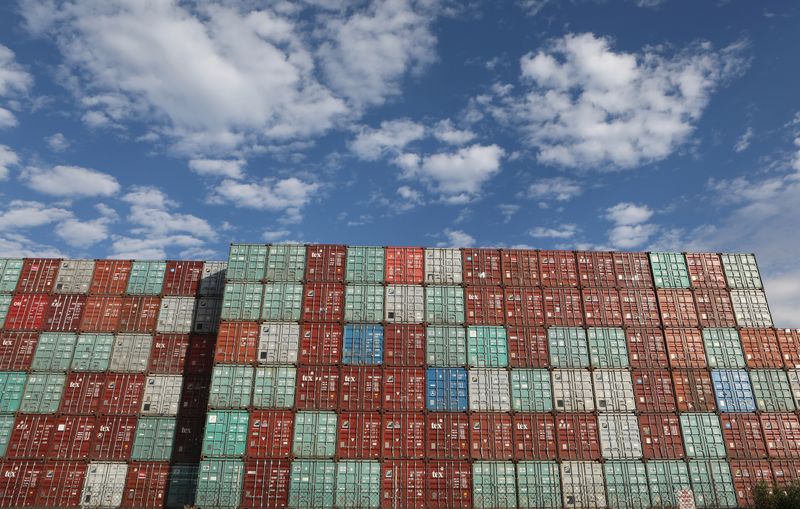By Wayne Cole
SYDNEY (Reuters) -Australia's economy held up better than expected in the first quarter as strong domestic demand offset the drag from dismal weather and a flood of imports, setting the scene for more inflation-fighting hikes in interest rates.
Data from the Australian Bureau of Statistics out on Wednesday showed gross domestic product (GDP) rose 0.8% in the March quarter from the previous quarter, topping market forecasts of a 0.5% gain.
Annual growth ticked down to a still-solid 3.3%, after a barn-storming 4.4% in the December quarter, and most analysts expect that to accelerate again as cashed-up consumers seem happy to keep spending.
"It supports our view that the economy will hold up better in the face of rising interest rates and falling real incomes than most anticipate," said Marcel Thieliant, a senior economist at Capital Economics.
"With the drag from net trade reversing and the reopening of the economy driving another marked rise in consumption, we have penciled in a stronger 1.5% q/q rise in Q2 GDP."
Household consumption alone had added 0.8 percentage points to growth in the first quarter, while government spending and inventories also made sizeable contributions. A chunk of that demand was met by imports, taking 1.5 percentage points off GDP.
Consumers still have money to spend with the household savings ratio dipping only modestly to 11.4%, well above pre-pandemic levels.
INFLATION DRIVES RATE HIKES
Consumer resilience is a major reason the Reserve Bank of Australia (RBA) felt confident enough to lift interest rates to 0.35% in May, and to flag more hikes ahead.
Markets are fully priced for another move to 0.6% at the RBA's June policy meeting next week, and imply rates could even reach 2.5% by year-end given the urgent need to cool red-hot inflation.
Inflation was evident throughout the GDP report with its main price index rising 2.9% for the quarter, the biggest increase since early 1988.
Compensation of employees, a proxy for wages, showed another large gain as firms paid more to attract and retain staff.
Yet the lift in prices also led to stronger nominal GDP, which surged 3.75% in the quarter and a heady 10.2% for the year taking output to A$2.2 trillion ($1.58 trillion).
Australia's terms of trade jumped 5.9% to a record courtesy of lofty prices for its key commodity exports, which in turn showered the mining sector with windfall profits.
Combined, that was a big boost to tax revenues and a much-needed boon to the newly installed Labor government as it wrestles with protracted budget deficits.

Treasurer Jim Chalmers, having promised during the election not to raise taxes, has already warned spending will have to be trimmed if government debt is to be restrained.
($1 = 1.3922 Australian dollars)